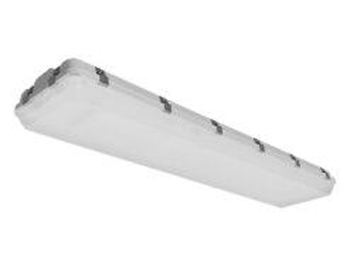
By the year 2030, LED lighting is predicted to occupy about 90% of the market, surpassing both halogen and fluorescent lighting in terms of popularity.
Industrial clients are starting to order industrial light fixtures and embrace LED lighting’s capacity to reduce energy expenses. More importantly, though, is that modern LED lights work incredibly well—pun intended—under the demanding and occasionally severe circumstances seen in many industrial operations.
Apart from the standard considerations that need to be taken care of in any lighting installation project or upgrade, industrial lighting also needs to be resistant to exposure to various elements like heat, chemicals, particulate matter, combustibility, and more.
Challenges For Industrial Lighting
Industrial establishments typically need to light large spaces for extended periods. This makes them excellent choices for a retrofit with LED illumination.
However, policymakers might still be worried.
They might be concerned about the expense of a significant retrofit. Alternatively, they might be worried that the new LED fixtures won’t function with the current wiring setup and would require a costly custom fix. They’ll also question whether their upgraded illumination will fulfil safety regulations and offer the necessary visibility to maintain operations. The favourable tidings? The majority of clients’ concerns are quickly eased with a little education.
Reminding clients that LED lights last longer and consume significantly less energy never hurts. Customers will benefit from reduced maintenance time and downtime as a result of this. After all, the savings mount up if a light is only changed every ten years as opposed to every few months.
Essential Aspects Of Industry Led Lighting
Ascertain whether any of the following components are necessary for your lighting setup in order to ensure that the LED industrial lighting fixtures you select will survive for a long time:
Defies Corrosion
In industrial buildings that prepare food or beverages and have chemicals or salt present, there is a legitimate concern about fixture corrosion. However, food-grade lighting fixtures eliminate that concern. Salt, corrosive chemicals, and other substances that can erode fittings are no match for these stainless steel hook fixtures that resist corrosion.
Operates Under Difficult Circumstances
LED drivers can be fatally affected by high temperatures. Fixture ambient heat ratings can be negatively impacted by using heat-emitting devices, such as forges, or by operating heavy machinery around the clock. However, there are fixtures certified for particular heat requirements that can be incorporated into a cost-conscious budget.
The LED industrial lighting designed to endure harsh environments is a great option if you’re searching for a fixture that can tolerate both heat and cold. Capable of performing at maximum effectiveness at a variety of temperatures.
Lowers the Risk of Fire and Contamination
In addition to fixtures with high working temperatures, the air in many industrial locations may contain flammable gases or vapours, combustible particles, or combustible dust. The outcomes could not be favourable if any of those gases or particles come into contact with excessive heat or a spark.
Additionally, an industry runs the danger of contaminating its fixtures if it uses water in its operations or generates dust and debris while doing so. Installing sealed fixtures can guard against power surges, keep debris out of the fixture (even when it’s hit by high-pressure jets), and prolong the life of the LED lights.
Shatter Resistant
Materials are important when choosing products for a refit. Glass and other breakable fixture types run the risk of breaking and hurting employees, delaying cleanup or lighting, and requiring time and money to replace broken fixtures.
When fixtures are impact-rated, there won’t be any downtime because of damage.
Controls
It makes sense: Performance is the top priority, and controls enable your clients to optimise their lights more easily than before. Furthermore, adding controls to LED industrial lighting is very simple.
Embracing LED industrial lighting not only addresses concerns about energy consumption and durability but also ensures compliance with safety regulations. The incorporation of corrosion-resistant, high-temperature-tolerant, and shatter-resistant LED fixtures minimises downtime, maintenance costs, and safety risks. For a future-proof lighting solution, industrial establishments should confidently invest in LED technology, enhancing operational efficiency and sustainability.


Disclaimer: PacLights is not responsible for any actions taken based on the suggestions and information provided in this article, and readers should consult local building and electrical codes for proper guidance.